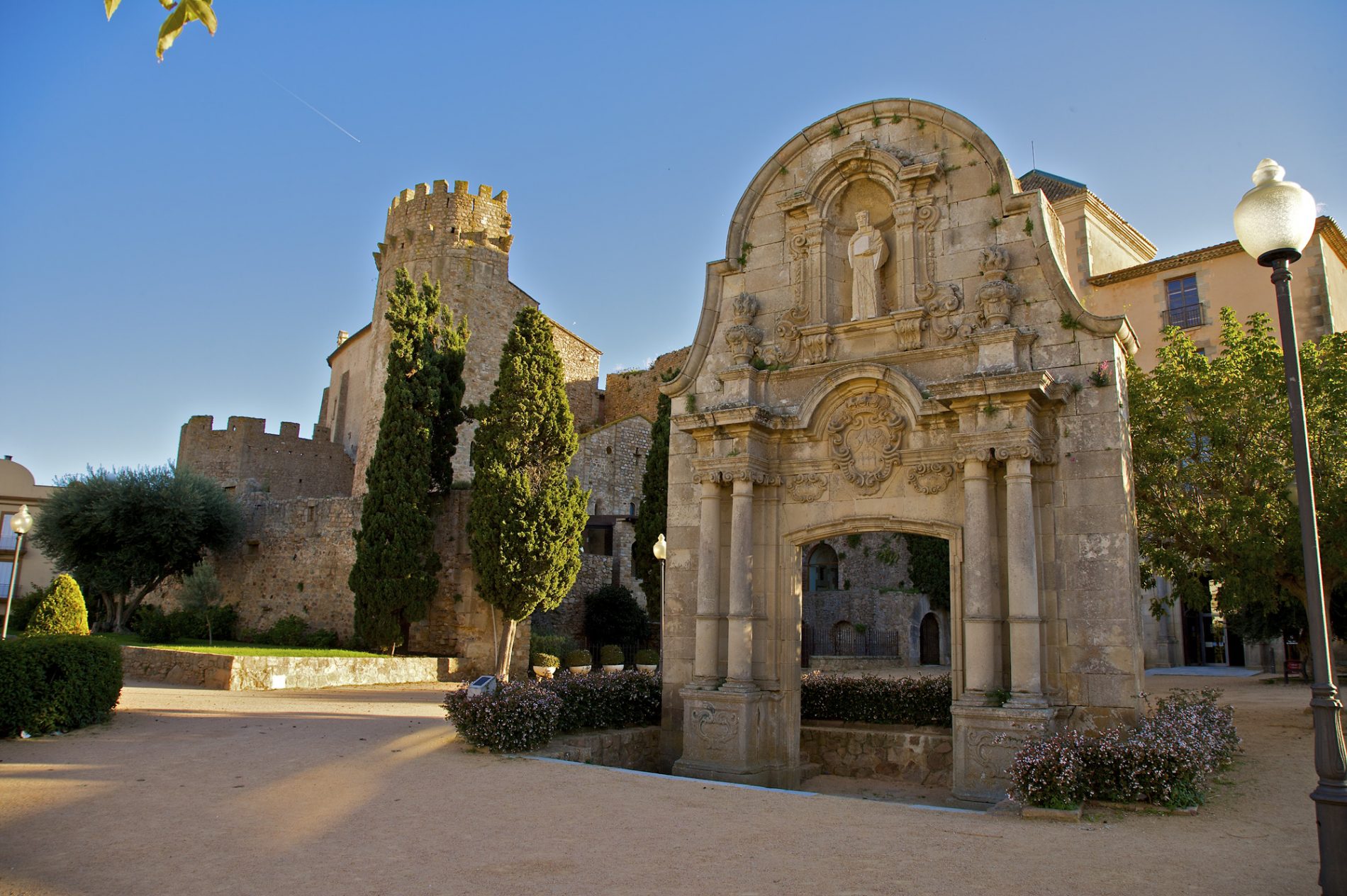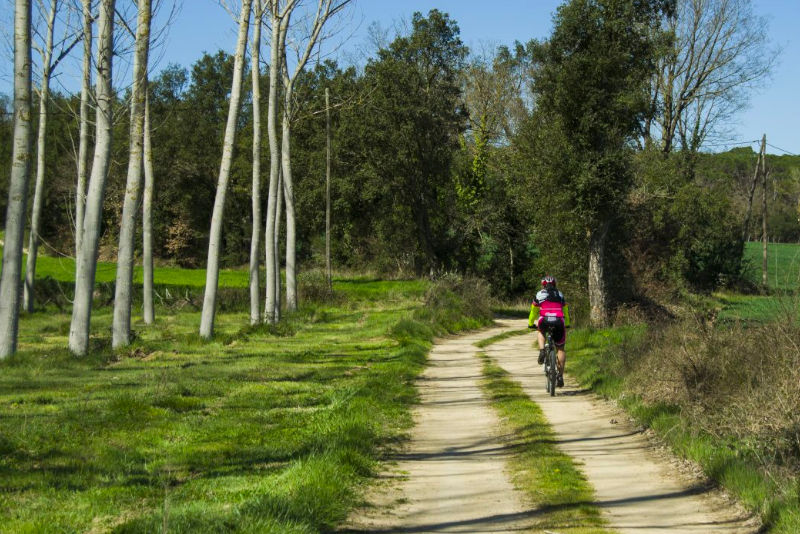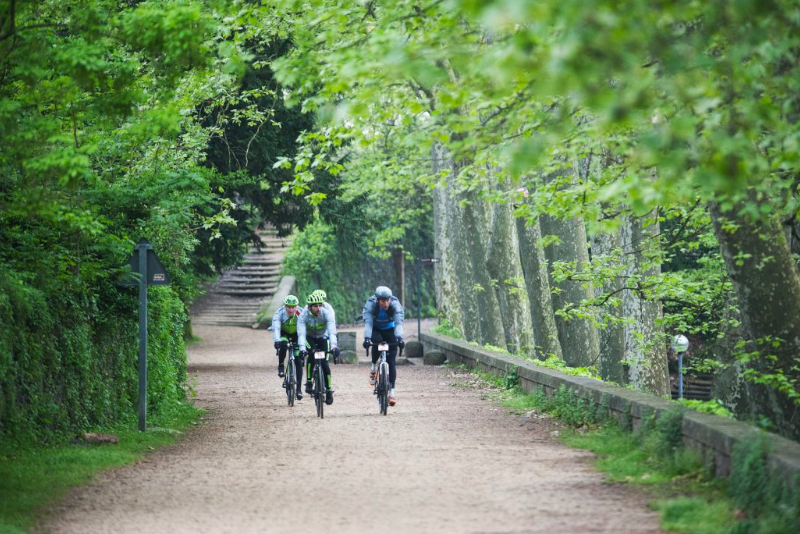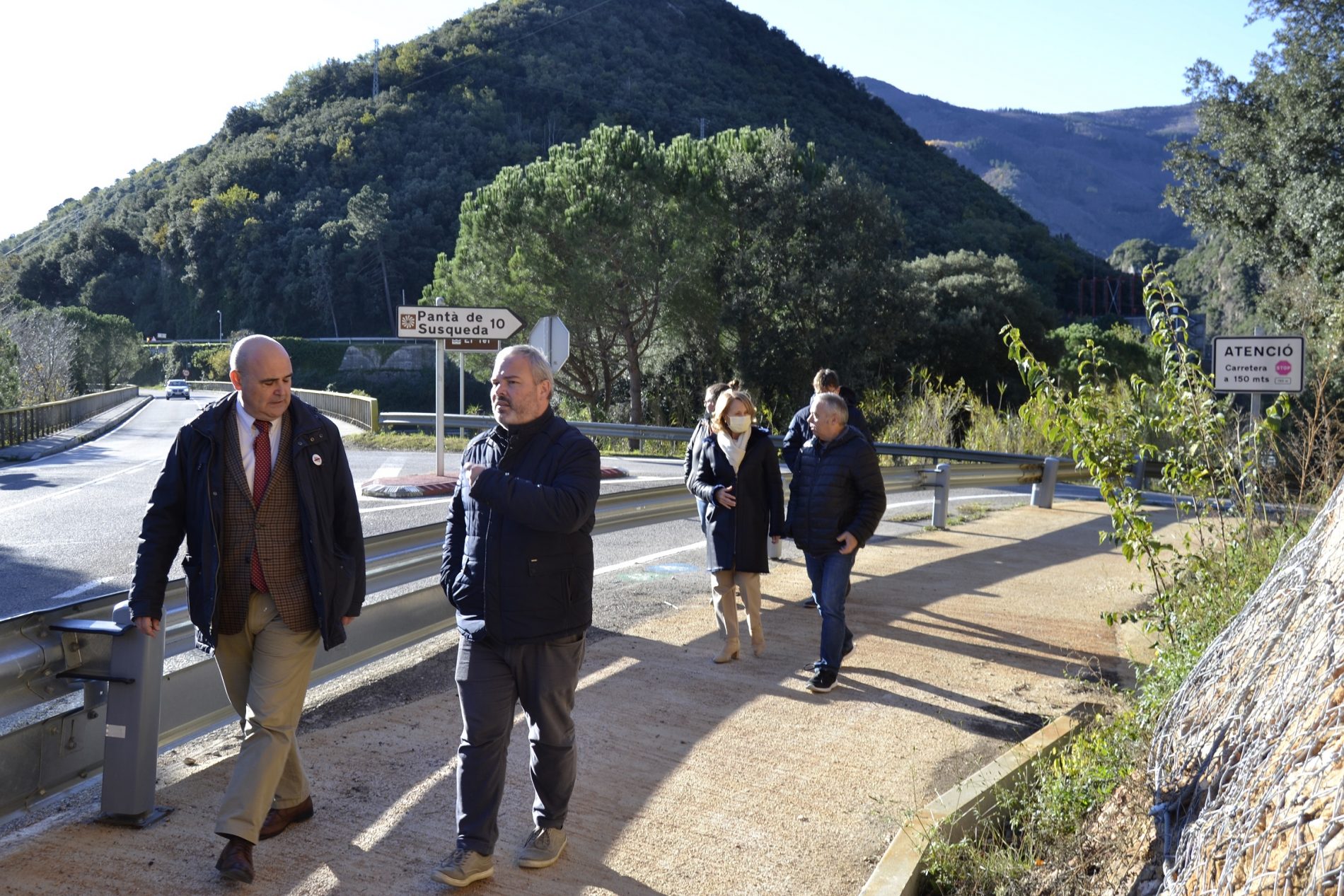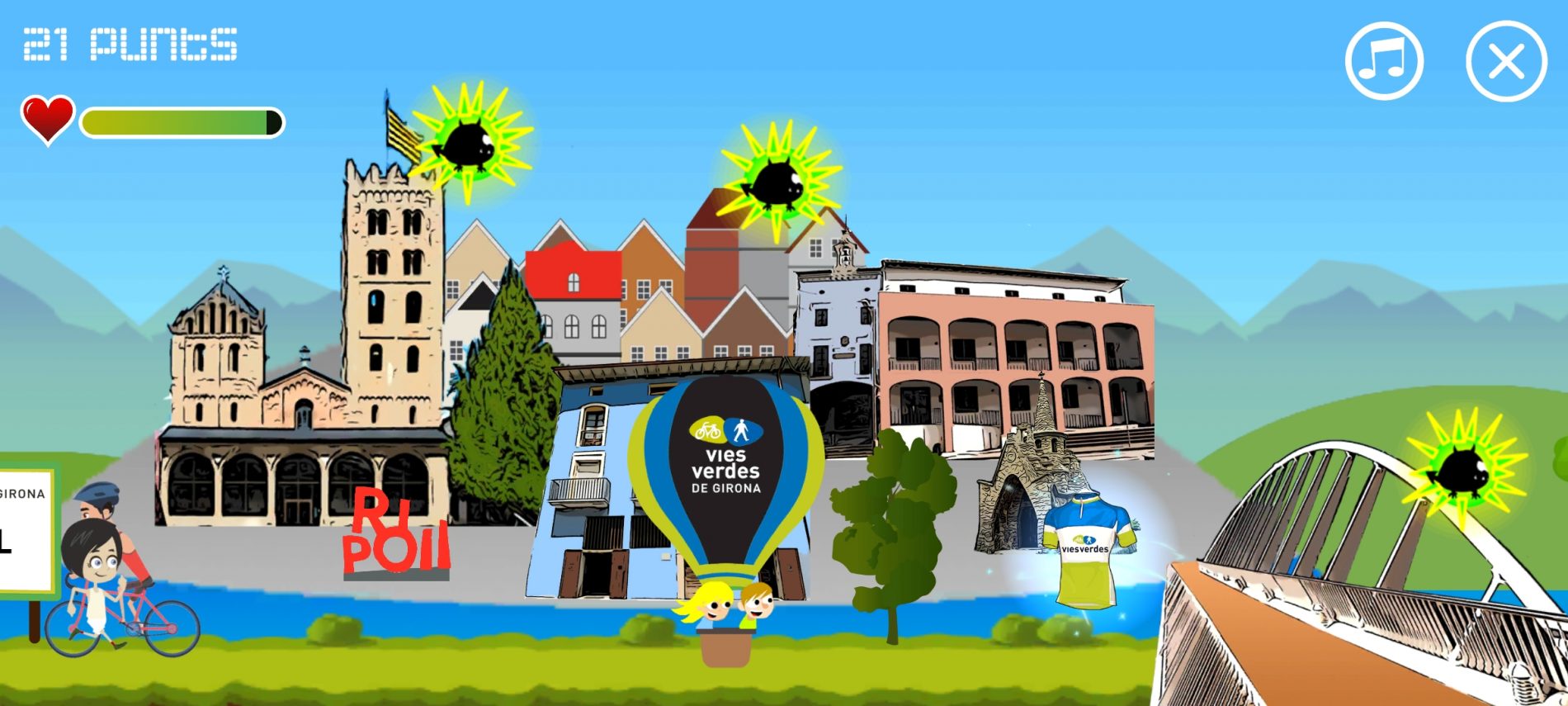What to visit
The essence of the coastline. The coastal path.
Baix Empordà Route
Carrilet II Route
Narrow-Gauge Railway Route II
We need to follow the main road (C-253) until we get to the exit for Platja d’Aro. Once we see the hill at the end of the town, we need to take the roundabout and then continue along the left-hand pavement. The hill will be more comfortable and safe to climb given that the road has no hard shoulder and is considerably steep.
When we arrive at Rotonda dels vents, we will descend along the first street to the left directly to the beach. There, we will continue on the right-hand side of the road, along the sea front that links up with the road that takes us to the port of Sant Feliu de Guíxols, after having completed a slightly demanding climb. The whole route is of asphalt and is shared with other vehicles.
PLATJA D’ARO
Before reaching the centre of the town, we will first pass the Roman town of Pla de Palol (1st century BC–4th century AD). The Platja d’Aro stretch offers a wide range of shopping options and, just as we reach the sea again, we will see a good example of sand dunes on our left. From here we can follow a small section of the coastal path of S’Agaró, which has few steps along the first part, and, apart from the great wealth which is characteristic of coastal areas, we will also be able to see good examples of Noucentisme architecture beside the sea.
LA COSTA BRAVA
The stretch that takes us to Sant Feliu from S’Agaró – whether we go by foot or by bicycle, provides us with a bird’s eye view of the magnificent panorama of the Costa Brava in its strictest sense; that of a rugged coastline with pink coloured granite cliffs with green pine trees that merge with the intense blue of the sea.
SANT FELIU DE GUÍXOLS
Born out of a small fishing village, beside a Benedictine monastery famous for its horseshoe-shaped gateway from the 10th century, the town has grown thanks to the development of the cork and tap industry. The Monastery of Porta Ferrada, initiated back in 968, houses the History Museum of the Town and the Carmen Thyssen Art Centre, where we can find temporary exhibitions from her collection. The town has other exhibition spaces, such as the Museum of Cava Plaques (cava bottle tops), Museum of the Rescue and the Tinglado del Port.
Finally, it is worth mentioning the seaside promenade, which reflects the economic progress made by the cork industry, and which is presided over by the numerous modernistic stately homes and the hermitage of Sant Telm, located upon the southern cliffs which, according to legend, inspired Ferran Agulló to use the term Costa Brava for the first time.
